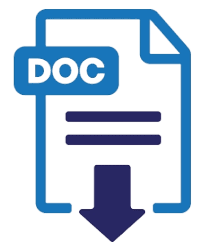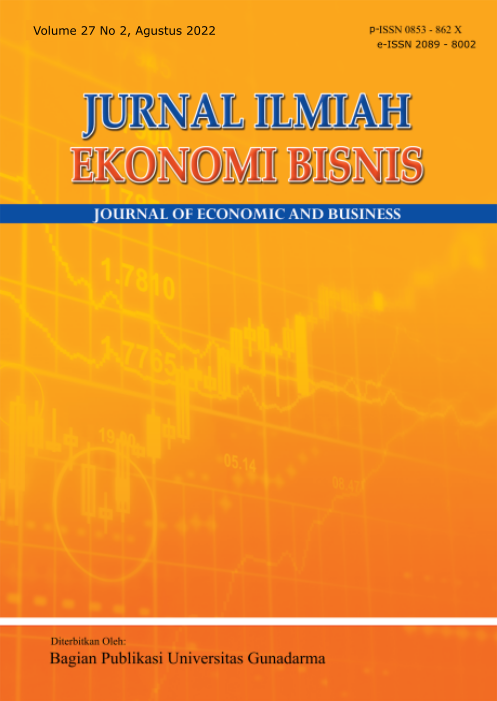COMPETITION ANALYSIS OF THE PUBLIC INSURANCE INDUSTRY IN INDONESIA
School of Business IPB University
Indonesia
Abstract
Keywords
References
Adriana, D., & Sunitiyoso, Y. (2013). Developing a differentation strategy of a captive insurance companies case study of PT XYZ. Indonesia Journal of Business Administration (IJBA), 2(4), 396-403.
Babuna, P., Yang, X., Gyilbag, A., Awudi, D, A., Ngmenbelle, D., & Bian, D. (2020). The impact of COVID-19 on the insurance industry. International Journal of Environmental Research and Public Health, 17(5766), 1-14.
Badan Pusat Statistik. (2019). Jumlah perusahaan asuransi dan perusahaan penunjang asuransi, 2017-2019. Retrieved from https://www.bps.go.id/indicator/13/1080/1/jumlah-perusahaan-asuransi-dan-perusahaan-penunjang-asuransi.html.
Badan Pusat Statistik. (2021). Ekonomi Indonesia triwulan I-2021 turun 0,74 persen. Retrieved from https://www.bps.go.id/pressrelease/2021/05/05/1812/ekonomi-indonesia-triwulan-i-2021-turun-0-74-persen--y-on-y-.html.
Dobbs, M, E. (2014). Guidelines for applying Porter's five forces framework: a set of industry analysis templates. Competitiveness Review, 24(1), 32-45.
Farrell, M. (2020). How is coronavirus affecting the insurance industry. Retrieved from https://www.coronavirusandtheeconomy.com/question/how-coronavirus-affecting-insurance-industry.
Garelli, S. (2012). IMD world competitiveness yearbook. Retrieved from https://www.imd.org/.
Glen, S. (2015). Purposive sampling (deliberate sampling). Retrieved from https://www.statisticshowto.com/purposive-sampling/.
Guntara, D. (2016). Asuransi dan ketentuan-ketentuan hukum yang mengaturnya. JUSTITUSI: Jurnal Ilmu Hukum, 1(1), 29-46.
Haque, A., Mohona, N,T., Sultana, S., & Kulsum, U. (2021). The impact of COVID-19 on the insurance industry of Bangladesh. Indian Journal of Finance and Banking 6(1), 73-88.
Manuel, E, G. (2016). The five competitive forces of the insurance and pension funds industry for the Angolan case. Arabian J Bus Manag Review, 6(6), 1-5.
Otoritas Jasa Keuangan. (2020). Survei nasional literasi dan inklusi keuangan 2019. Retrieved from https://www.ojk.go.id/id/berita-dan-kegiatan/publikasi/Pages/Survei-Nasional-Literasi-dan-Inklusi-Keuangan-2019.aspx.
Parvathi, V., & Lalitha, C. (2021). Impact of COVID-19 pandemic on the Indian insurance sector. Perspectives on Business Management & Economics, 4(2021), 60-65.
Paunescu C.M. (2013). Challenges of entering the business market: the pre-entry knowledge and experience. Management & Marketing, 8(1), 63-78.
Porter, M, E. (1980). Competitive strategy: techniques for analyzing industries and competitors. New York: Free Press.
Porter, M, E. (1993). Keunggulan bersaing: menciptakan dan mempertahankan kinerja unggul. Jakarta: Erlangga.
Porter, M, E. (2008). The five competitive forces that shape strategy. Harvard Business Review, 68(3), 79-91.
Pulawska, K. (2020). Impact of the COVID-19 pandemic on insurance companies in Europe-first signal. Retrieved from: doi:10.2139/ssrn.3708992.
Sigalas, C. (2015). Competitive advantage: the known unknown concept. Management Decision, 53(9), 2004-2016.
Srivastava, D., Shah, H., & Talha, M. (2006). Determinants of competitiveness in Indian public sector companies: an empirical study. Competitiveness Review, 16(3), 212-222.
Rianto, N. (2012). Pengantar ekonomi syariah. Bandung: CV Pustaka Setia.
Robson, J. (2015). General insurance marketing: a review and future research agenda. Journal of Financial Services Marketing, 20(4), 282-291.
Prajapati, U., Lukman M., B., & Setiadi, D. (2019). Strategy for performance improvement at building division of PT Hutama Karya (Persero) in conditions of construction building business competition. RJOAS, 8(92), 227-206.
Wandebori, H. (2019). Proposed business strategy improvement through service quality gap model to increase membership coverage of BPJS Ketenagakerjaan. Jurnal Manajemen Teori dan Terapan, 12(3), 189-206.
Wang, Y., Zhang, D., Wang, X., & Fu, Q. (2020). How does COVID-19 affect China's insurance market. Emerging Markets Finance and Trade, 56(10), 2350-2362.
World Health Organization. (2020). WHO coronavirus disease (COVID-19) dashboard. Retrieved from: https://covid19.who.int/.
Worku, A., & Mersha, D. (2020). The effect of COVID-19 on insurance industry in Ethiophia. HAJBE Special Issue 1, 39-44.
Yiannakopoulos, Y., Magoutas, A., & Chountalas, P. (2017). Strategic competition analysis and group mapping: the case of the Greek insurance industry. EAST-WEST Journal of Economics and Business, 20(1), 41-65.
Yudistira, G. (2019). Jumlah perusahaan asuransi stagnan, ini penyebabnya. Retrieved from: https://keuangan.kontan.co.id/news/jumlah-perusahaan-asuransi-stagnan-ini-penyebabnya.


